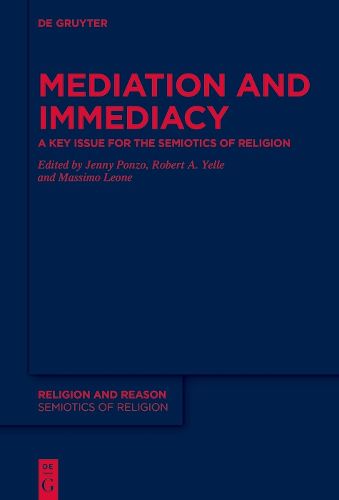Readings Newsletter
Become a Readings Member to make your shopping experience even easier.
Sign in or sign up for free!
You’re not far away from qualifying for FREE standard shipping within Australia
You’ve qualified for FREE standard shipping within Australia
The cart is loading…






Religion, like any other domain of culture, is mediated through symbolic forms and communicative behaviors, which allow the coordination of group conduct in ritual and the representation of the divine or of tradition as an intersubjective reality. While many traditions hold out the promise of immediate access to the divine, or to some transcendent dimension of experience, such promises depend for their realization as well on the possibility of mediation, which is necessarily conducted through channels of communication and exchange, such as prayers or sacrifices. An understanding of such modes of semiosis is therefore necessary even and especially when mediation is denied by a tradition in the name of the ‘ineffability of the deity or of mystical experience.
This volume models and promotes an interdisciplinary dialogue and cross-cultural perspective on these issues by asking prominent semioticians, historians of religion and of art, linguists, sociologists of religion, and philosophers of law to reflect from a semiotic perspective on the topic of mediation and immediacy in religious traditions.
$9.00 standard shipping within Australia
FREE standard shipping within Australia for orders over $100.00
Express & International shipping calculated at checkout
Religion, like any other domain of culture, is mediated through symbolic forms and communicative behaviors, which allow the coordination of group conduct in ritual and the representation of the divine or of tradition as an intersubjective reality. While many traditions hold out the promise of immediate access to the divine, or to some transcendent dimension of experience, such promises depend for their realization as well on the possibility of mediation, which is necessarily conducted through channels of communication and exchange, such as prayers or sacrifices. An understanding of such modes of semiosis is therefore necessary even and especially when mediation is denied by a tradition in the name of the ‘ineffability of the deity or of mystical experience.
This volume models and promotes an interdisciplinary dialogue and cross-cultural perspective on these issues by asking prominent semioticians, historians of religion and of art, linguists, sociologists of religion, and philosophers of law to reflect from a semiotic perspective on the topic of mediation and immediacy in religious traditions.